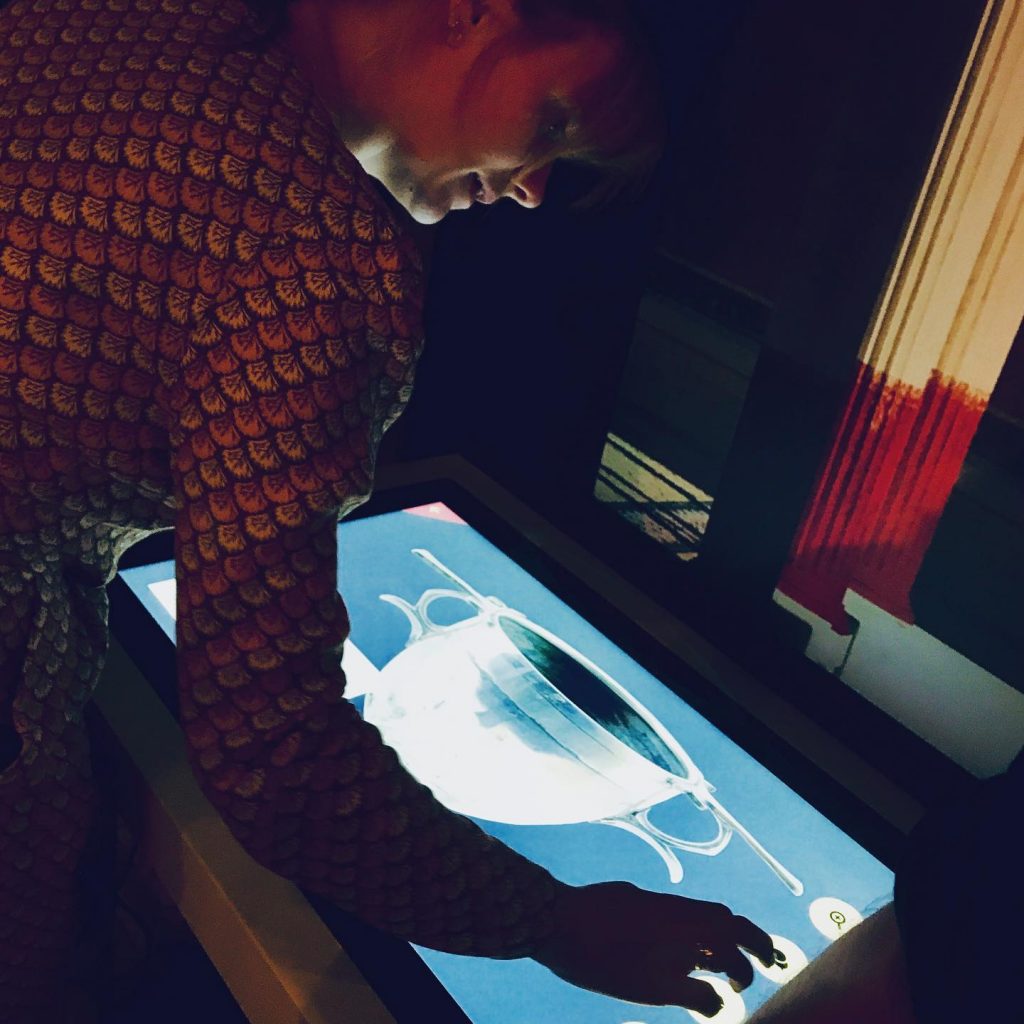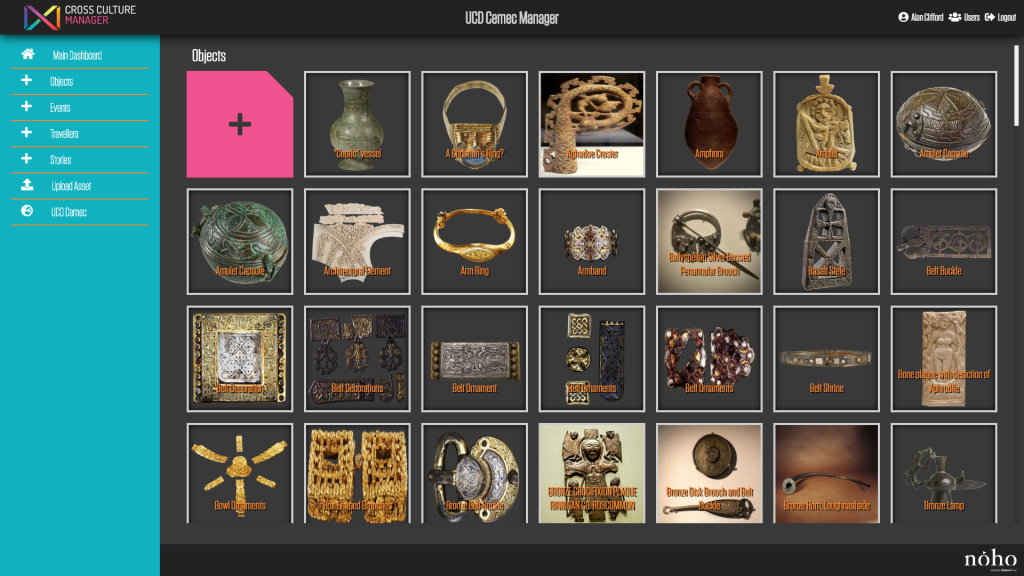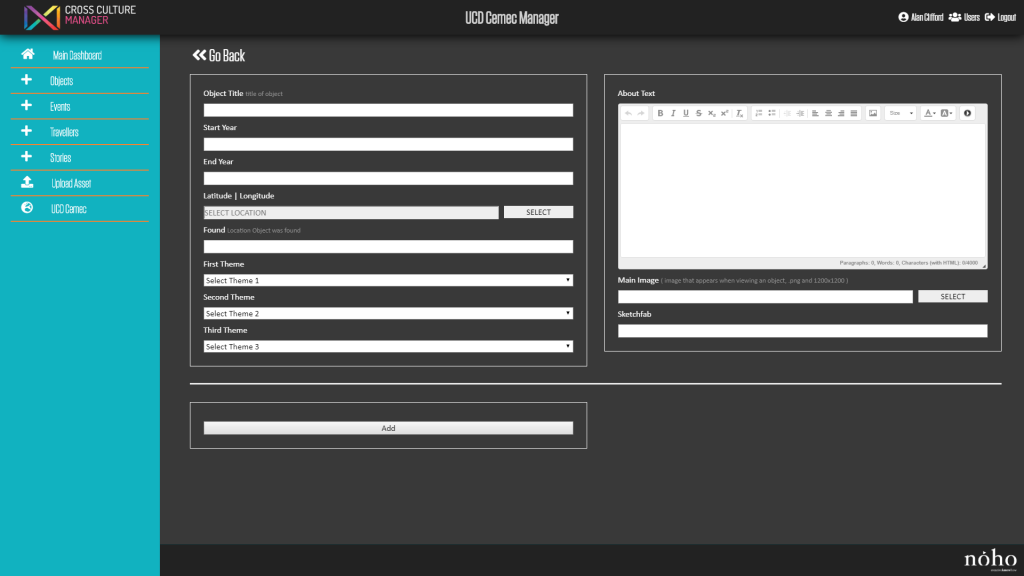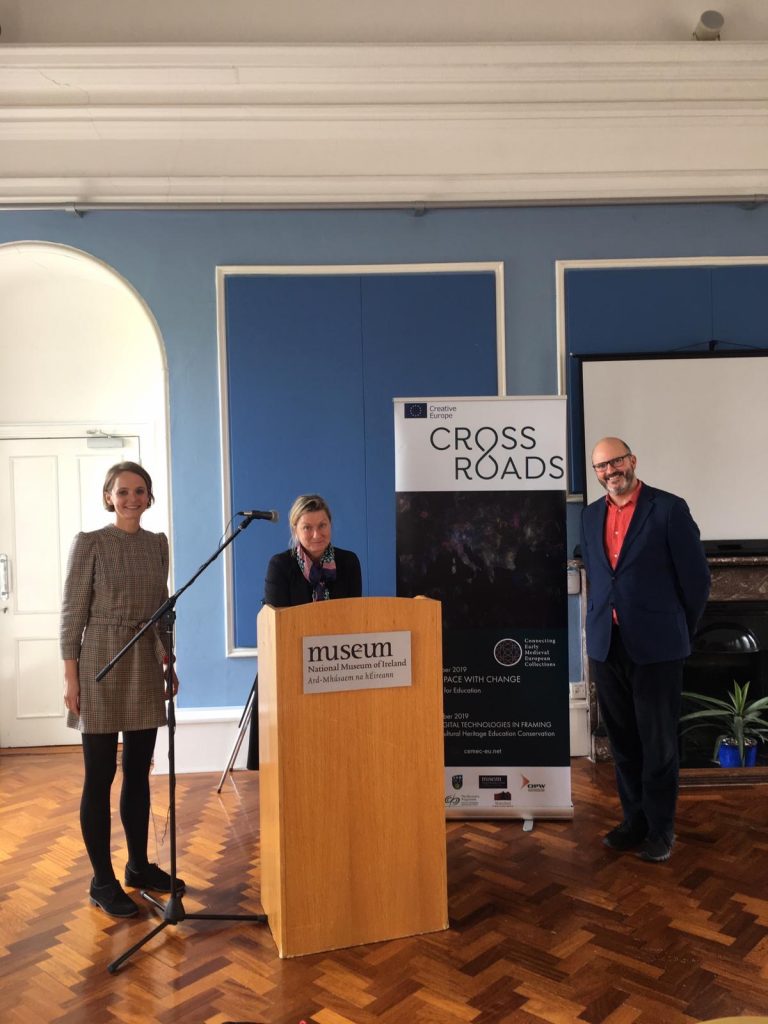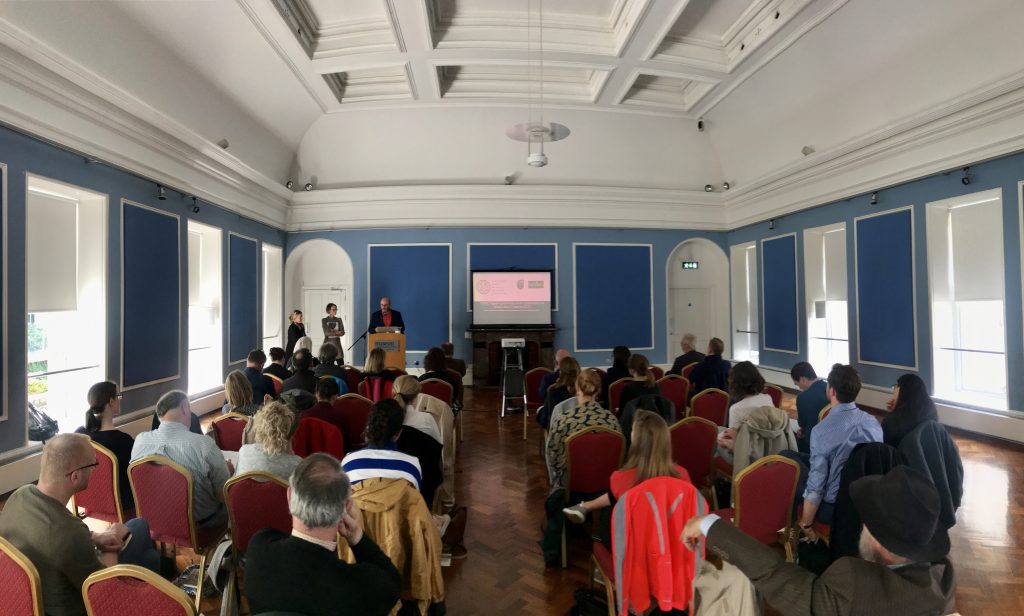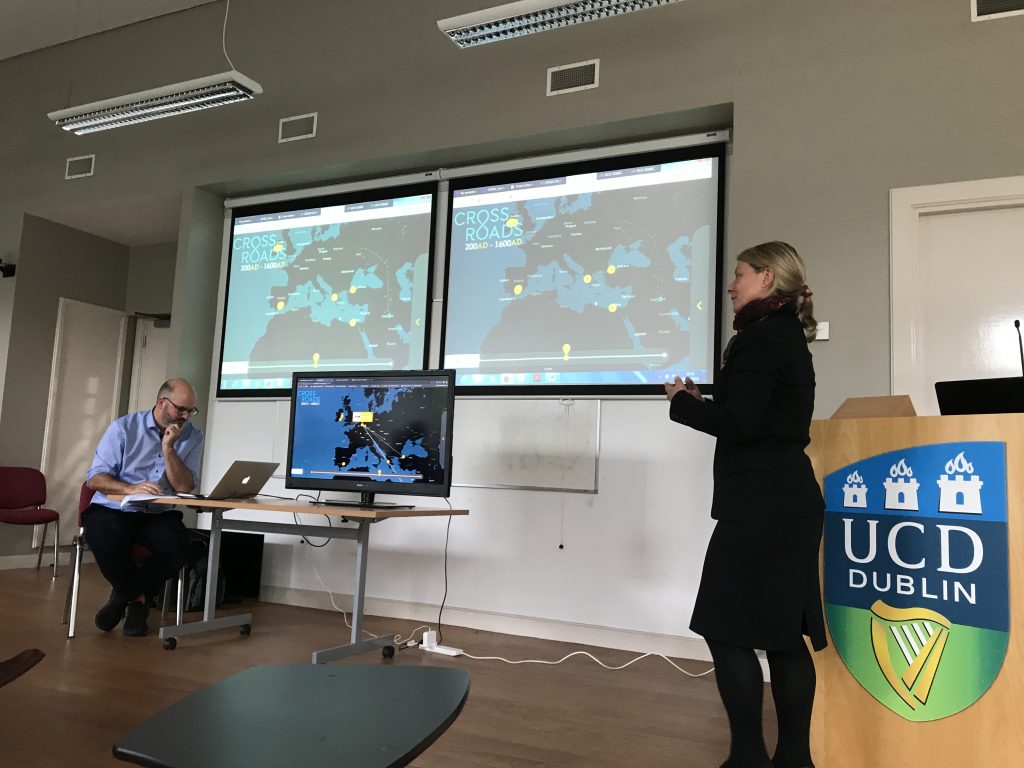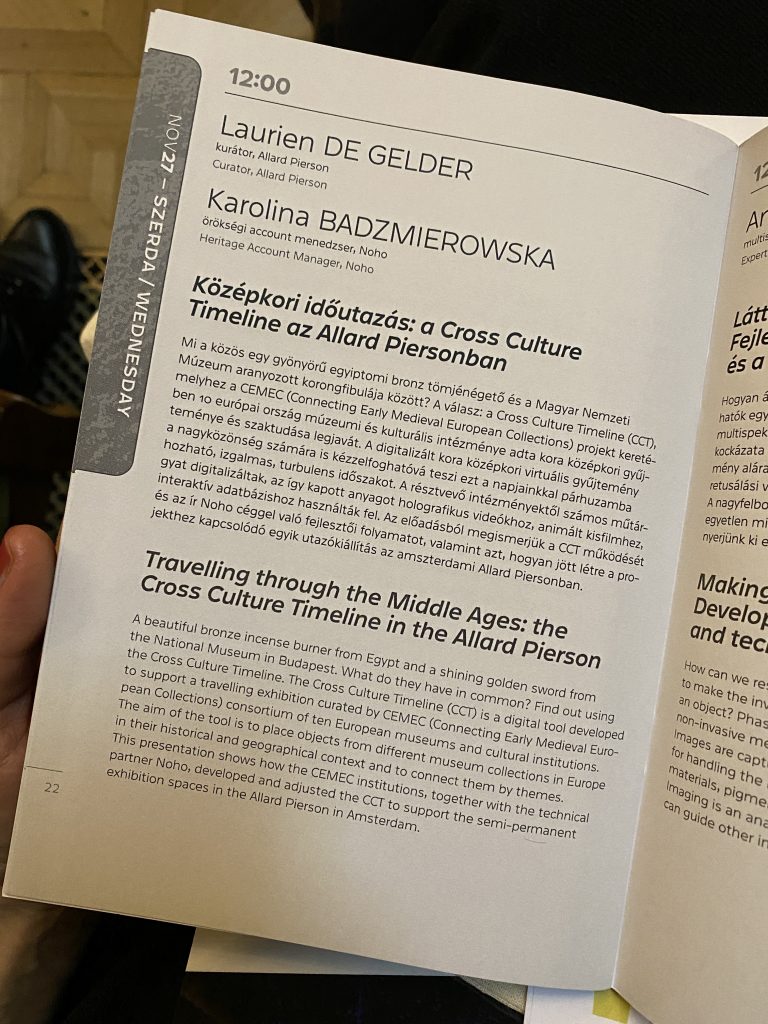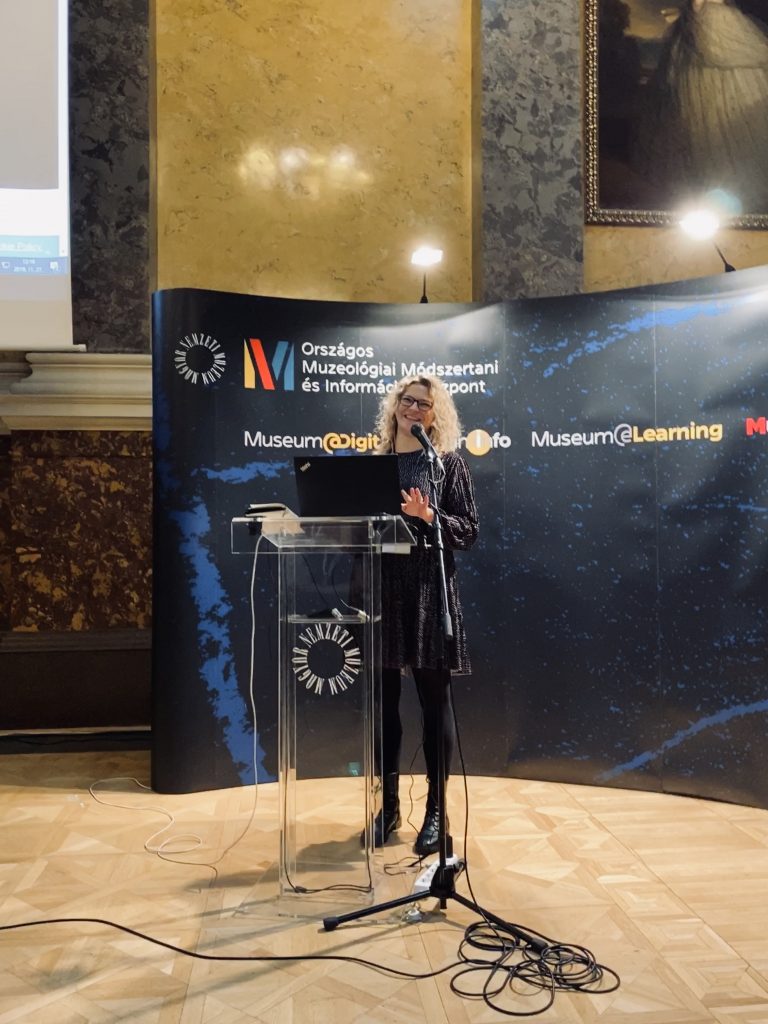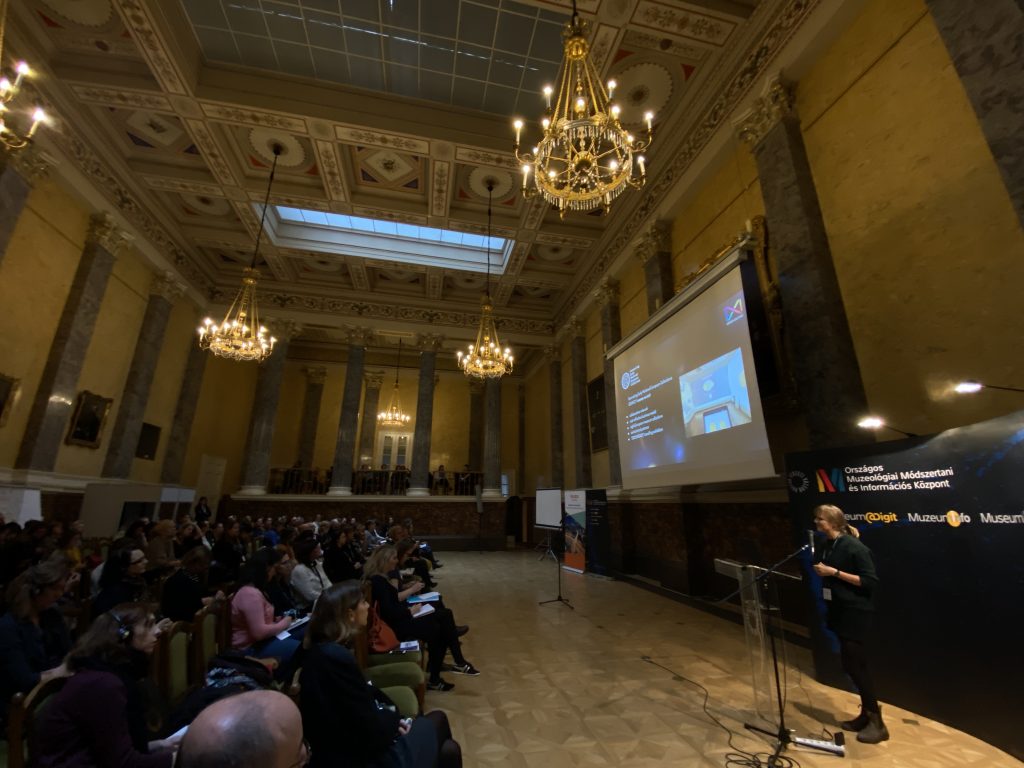Cross Culture: watch this space!
For the past three years Noho were a technical partner in the EU-funded cooperation project CEMEC – Connecting Early Medieval European Collections (2016-2019). The project created a collaborative network and a cost-effective business model between eight European museum collections and six technical partners. Drawing on objects from participating museum collections, the project produced ‘CROSSROADS’, a travelling exhibition focusing on connectivity and cultural exchange during the Early Middle Ages (300 -1000) in Europe. This period is often defined as ‘the Dark Ages’, however CROSSROADS had successfully shed a new light on this misconception, presenting the period as a time of exchange, in objects, people and ideas. The exhibition was held at the Allard Pierson Museum in Amsterdam (September 2017 – February 2018), the Byzantine and Christian Museum in Athens (May – October 2018) and at the LVR Landesmuseum in Bonn (November 2018 – August 2019). The exhibition was visited by over 139k people across the three venues. It is currently on view at the Art & History Museum in Brussels (September 2019 – March 2020). The content of the exhibition was also published: Crossroads: Travelling Through the Middle Ages: reizen door de Middeleeuwen.

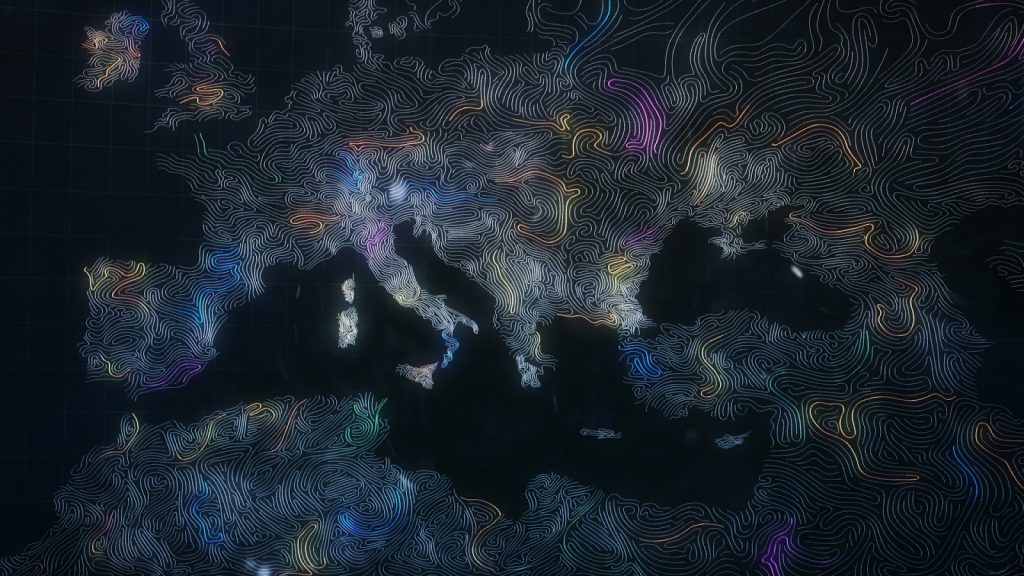
One of our primary roles in the project was to develop the ‘Cross Culture’ timeline application. The application enabled museums and online visitors to explore the rich cultural history and diversity of Early Medieval Europe. It connected to a database of 3D scanned objects, allowing users to take a closer look at objects in the exhibition and to learn more about the collections and history from their devices at home.
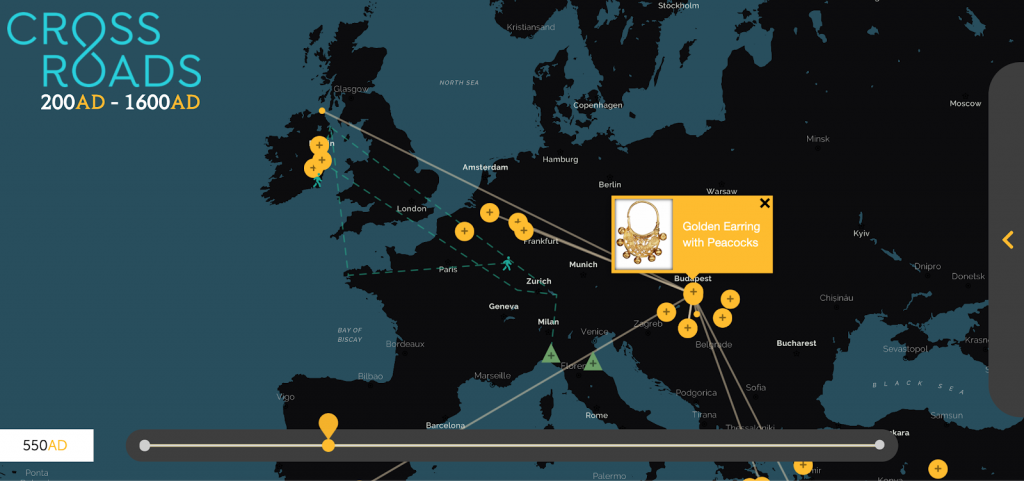
The CEMEC project was a great testing environment for the Cross Culture application. It has evolved since the end of the project and will be launched as a standalone product in the early 2020. Cross Culture is an easy-to-use application for making engaging interactive timelines for cultural heritage. Curators and heritage professionals can easily create content and stories themselves, linking together 3D objects, stories and events on an interactive timeline for a chosen period. The timeline can be deployed on the web, on mobile, or as a touchscreen application within the museum.
The Cross Culture timeline was also successfully used as an education tool in 3rd level education in 2019. Dr Lynda Mulvin FSA and Dr Anna Kadzik-Bartoszewska used it with their students at the School Of Art History & Cultural Policy, University College Dublin. It supported the teaching and learning experience by allowing the lecturers to lead on the discussion and to design assignments and classroom activities using visual storytelling.

The application helped to develop dynamic, multidisciplinary and innovative teaching techniques and to adapt theoretical knowledge through the use of technological and integrated tools.
In April of 2017 the Cross Culture timeline was showcased at an event in Dublin. In 2019, it was showcased at two events: the seminar ‘Role of Digital Technologies in framing policy: Cultural Heritage Education Conservation’ at the National Museum of Ireland and the seminar ‘Digital Technologies and Education: Keeping up with the pace of change’ in the UCD Humanities Institute. Both events brought together CEMEC partners as well as interested parties from the museum and heritage community in Europe. At the latter, the CROSSROADS online exhibition website was officially launched.
In November 2019 the Cross Culture timeline was also presented at the Museum Digit conference in Budapest, Hungary to a room of over 100 museum and heritage professionals.
The Cross Culture timeline is being prepared for an official launch in 2022 and we are very excited to bring it to wider audiences. Watch this space!
If you have any questions regarding the Cross Culture timeline please contact us at info@noho.ie. Alternatively sign up to our mailing list to get the update about the launch and other news from the team at Noho.
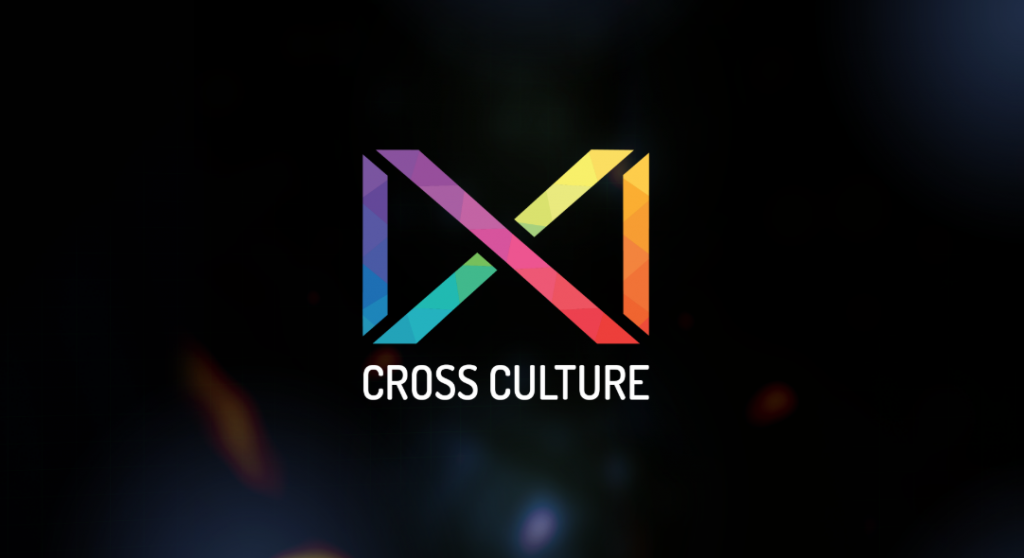
Beyond 2022 – Reconstructing the past
In December of 2016 we were asked by Trinity College Dublin and Adapt to digitally reconstruct an iconic Irish building that is long gone – The Public Record Office of Ireland at the Four Courts, for the Beyond 2022 project. Although it was destroyed by a massive fire in 1922, just enough information about it survived in order for us to attempt this challenge.
With a few old plans, elevations, cross-sections and the help of the only two remaining photographs that depict any detail, we re-constructed this landmark-building from the ground up.
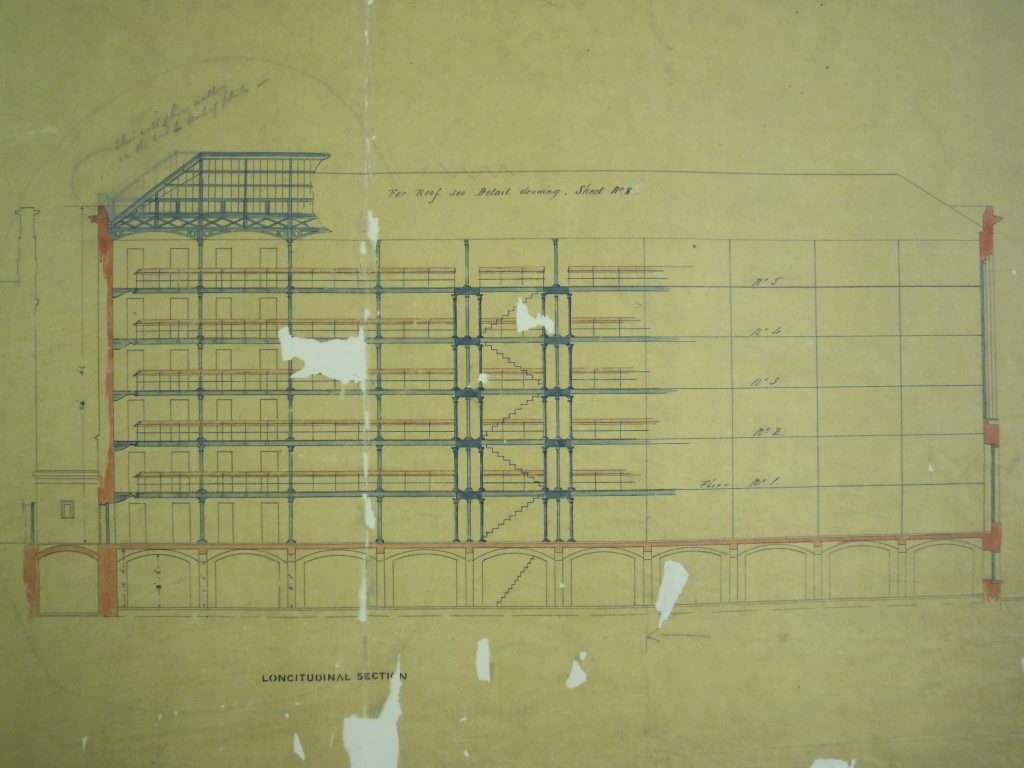
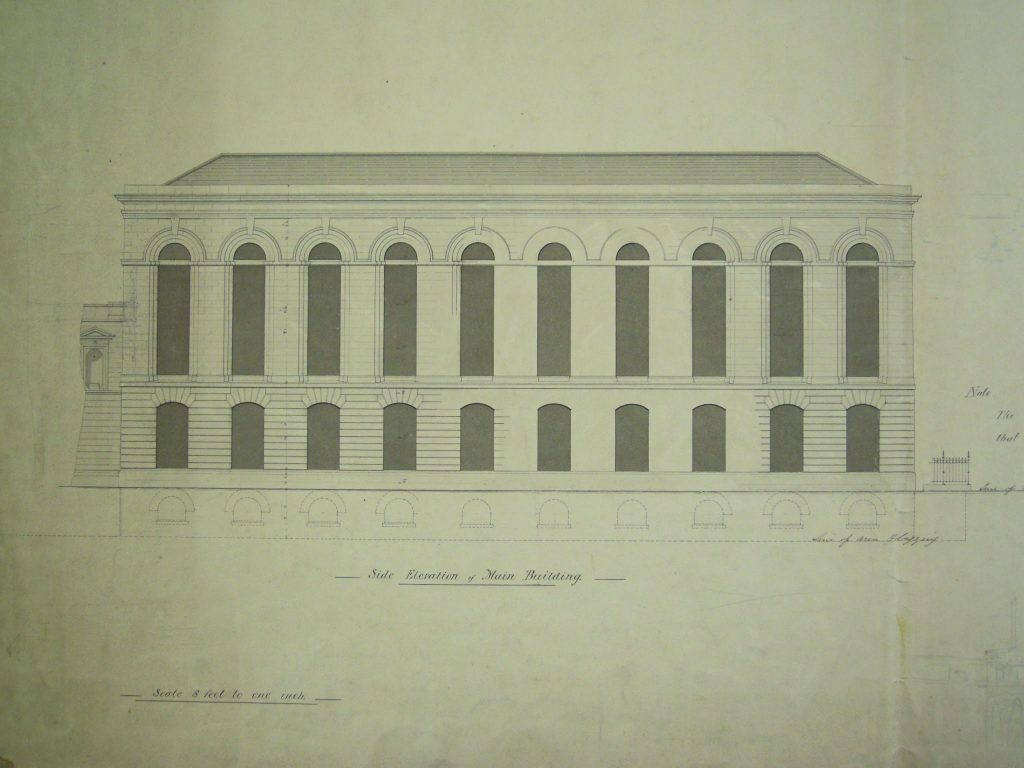
The Record Treasury was a six storey brick building with a complex internal cast iron structure that intertwined flooring, shelving, staircases and the roof support structure. Detailed ornaments were used throughout the building, yet many details that are seen in the plans were left out as can be seen in the photographic evidence.
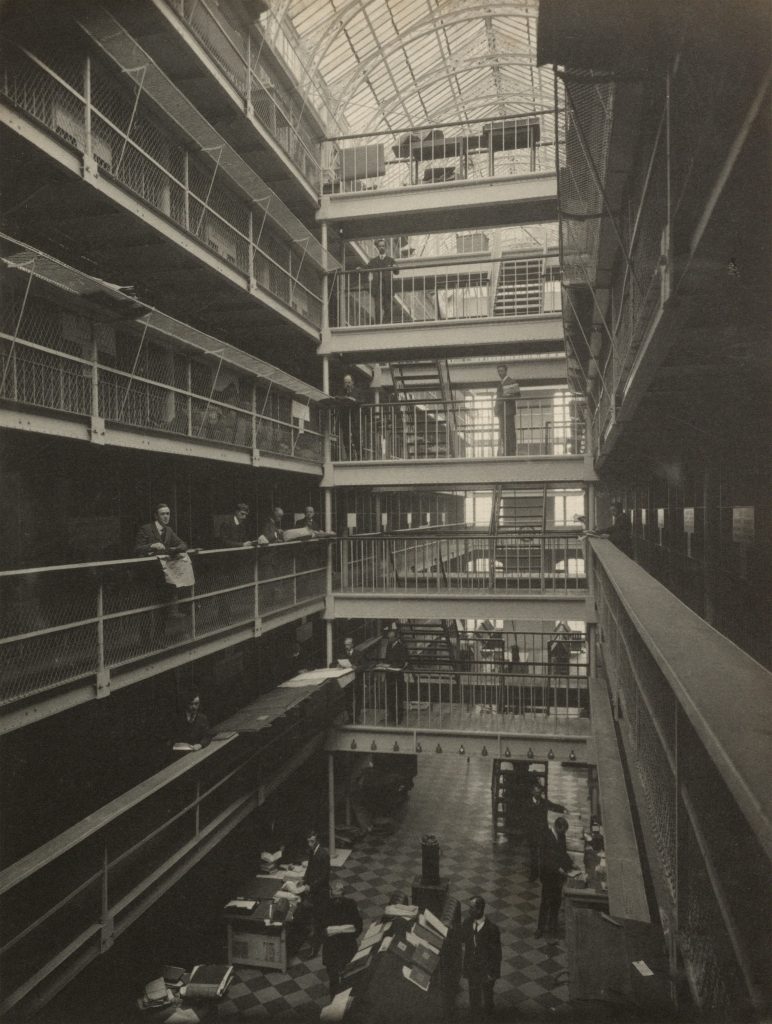
Before commencing the modelling process of the reconstruction, we carefully realigned and scaled all the plans to be in the correct relation to each other. Though this proved difficult, especially as there were slight discrepancies between the various detail and overview plans. There are still certain sections of the building we don’t fully understand since no information about their construction exists anymore. So some parts might feel less refined than others, but that is only because we decided to only build what was either supported by evidence in form of plans or photos or could be logically deduced with near certainty.
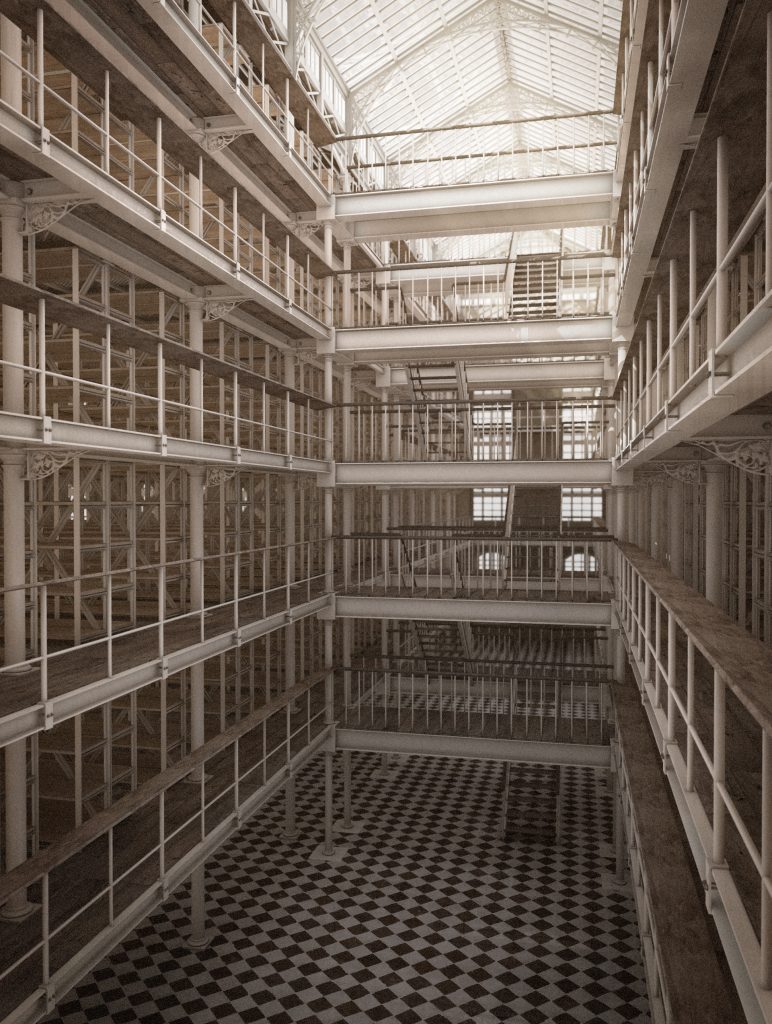

We put in as much detail as possible within our timeframe while still maintaining an accessible and easy to use model to generate our animation sequences and also for further use.
In order to experience the full sense of scale of this extensive building we also created a Realtime-VR version with a few less details visible. Now you can be teleported back in time and roam through the vast space filled with shelves of records and marvel at the stunning view of the central glass ceiling. Thanks to the big effort of our VR department we turned this project around in a record time. And at the opening event for this project, which was hosted by the British Ambassador in the magnificent House of Lords chamber in the Bank of Ireland building, it turned out to be a great hit and a mind opening experience for some of the guests.
It was an extraordinary opportunity for us to work on this project. It was a bit hectic at times and lot of effort went into making it. But it certainly feels great to shed further light on a part of Irish history and bring a lost building back to life – even if only in the virtual world.
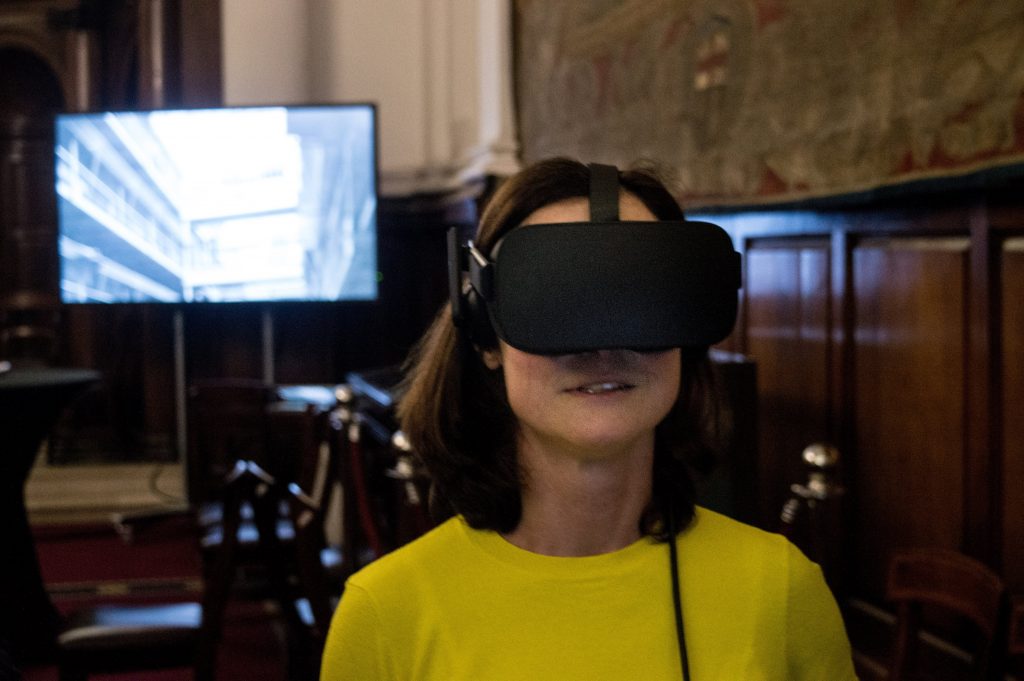
We would like to thank everyone involved in this project – in particular Peter Crooks and Ciarán Wallace from TCD and Séamus Lawless and Mark Farrell from ADAPT. We hope that, in the not too distant future, we’ll get an opportunity to return to it and further refine and advance the experience.
(All source photos and information can be accessed from the Beyond 2022 website.)
Klemens Kopetzky – Feb 2018
Night at the Museum – CEMEC showcase

In April of 2017 we showcased our cross culture timeline to our partners in the CEMEC project. Our partner Lynda Mulvin (School Of Art History & Cultural Policy UCD) hosted the European partners in Dublin with some help from the Noho team. Our showcase was the first event of a successful few days featuring talks, presentations, tours and workshops.
The showcase event was in the beautiful Rotunda room of the National Museum and both Wim Hupperetz (Director of the APM and CEMEC project) and Raghnall Ó Floinn (Director of the National Museum of Ireland) gave short talks stressing the importance of cooperation, connections and accessibility in the modern museum. Other attendees included ambassadors from the Netherlands, Hungary and Spain, as well as interested parties from the heritage community in Ireland.
It was a very proud moment for the Noho team on a number of levels. Firstly, the alpha release of our timeline illustrated to the Museum and the community here, the power and potential of employing digital tools to explore objects and heritage in Ireland, and what better venue to do so, than in the Rotunda of the Museum itself. On another level we were thrilled to bring our European partners to Dublin, a chance for us to show off this wonderful city while getting some great work done. We have been hosted by our partners in many different cities across Europe on various EU projects but this was our first time hosting here in Dublin.
It was also a chance for us to highlight how important EU funded projects are for a SME like ourselves. They provide a framework for us to work with teams in large research institutions (CNR, Fraunhofer, INRIA, Athena) and with great Museums and Universities. But most of all, we get to tell stories that span all the way across Europe and get hands-on access to its most important treasures. There are of course many different voices and points of view within a European network but generally as a consequence we get a better result, a deeper emphatic understanding of our partners culture/history/heritage and make friends and lasting relationships with people across the whole field.
We are now working towards the first exhibition of the CEMEC project in Amsterdam in September. We will be busy with the timeline and busy creating a film telling the story of early medieval Europe.
Ba mhaith linn buíochas a ghabháil leis an Ard Mhuséam as ucht an rotunda a chur ar fáil dúinn. We’d also like to thank Lynda and Anna for hosting and organising such a great few days.



